A Cotswolds Travel Guide: Everything You Need To Know
There’s something timeless about the Cotswolds. Rolling green hills stretch into the horizon, golden-stone cottages glow in the sunlight,...

Full of rustic charm, honey-hued stone cottages and idyllic countryside, the Cotswolds are a popular destination for many. But what are the prettiest villages in the Cotswolds?
Whether you’re enjoying a relaxing Cotswold getaway or simply passing through, a trip to one of these beautiful locations is sure to provide a quintessentially English experience. Check out our hidden gems in the Cotswolds.
Keep reading to discover the prettiest villages in the Cotswolds…
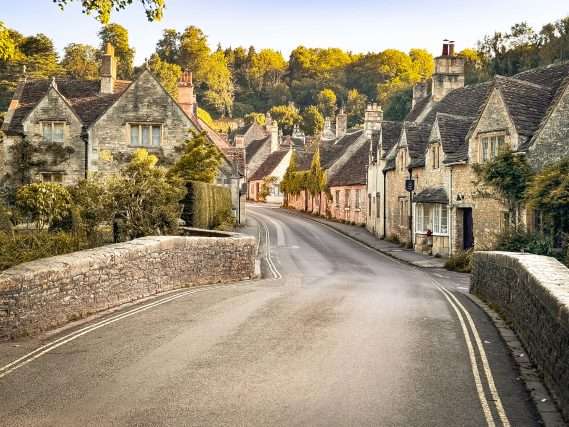
Home to an array of honey-hued Cotswold stone cottages, Castle Combe is one of the most beautiful villages in the Cotswolds. This charming village sits within the Area of Outstanding Natural Beauty, in North West Wiltshire and is home to St Andrew’s Church which dates from the 13th century.
Enjoy a morning stroll along the quaint village bridge, visit the Market Cross or enjoy afternoon tea at The Manor House Hotel. Don’t forget to take an iconic snap from Water Lane, one of the most photographed spots in the Cotswolds.
Castle Combe has featured in many films including The Wolf Man, Stardust and War Horse. You’ll also find the Castle Combe Circuit, nestled on the edge of the village, where you can experience the thrill of a supercar driving experience.
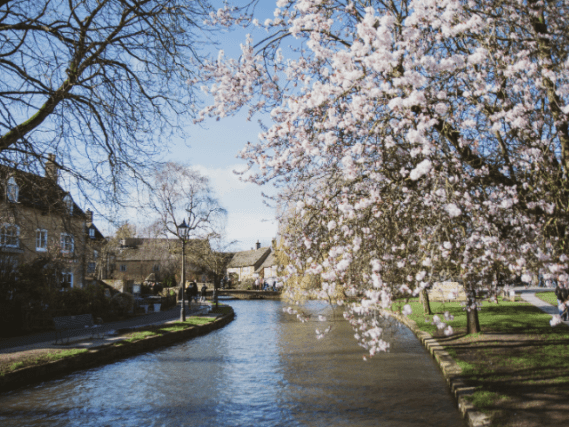
Known as the Venice of the Cotswolds, Bourton-on-the-Water has regularly been voted one of the prettiest villages in England. Boasting a series of elegant low bridges across the River Windrush, Bourton-on-the-Water is one of the most popular tourist spots in the Cotswolds.
Walk along the River Windrush as it meanders through the beautiful English countryside or spend an afternoon exploring the eclectic mix of independent shops or enjoying a refreshing drink in a rustic country-inspired pub.
If you can tear yourself away from this attractive village, then a trip to Birdland Park and Gardens, home to a wide variety of exotic birds, is well worth the visit. Or why not marvel at the intricate detail of the buildings at the Model Village or spend an afternoon exploring the Cotswold Motoring Museum.

Once described as “the most beautiful village in England” by William Morris, Bibury is a picturesque village home to a row of tenanted 17th-century weavers’ cottages. This typically Cotswold village is full of quintessential English charm and is located just a few miles away from the capital of the Cotswolds, Cirencester, where you can grab a bite to eat in one of these charming cafes in Cirencester.
Once you have spent time admiring the honey stone cottages of Arlington Row, head out for a scenic stroll along the River Coln or enjoy an afternoon cosied up in a welcoming, country pub. However you decide to spend your time in Bibury, you’re bound to fall in love with this picture-perfect village.
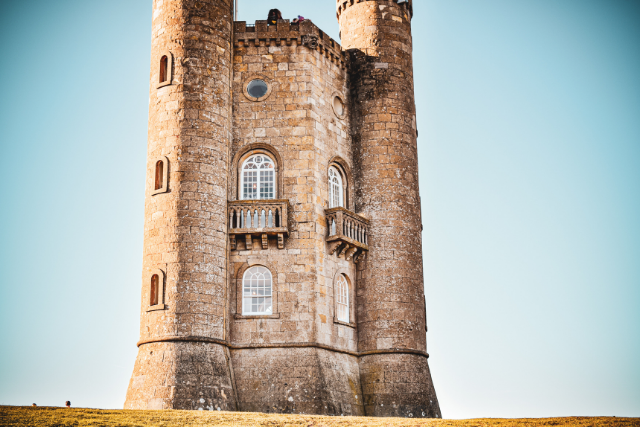
Often referred to as the “Jewel of the Cotswolds”, Broadway is a beautiful and historic Cotswold village. Its picturesque tree-lined high street is home to an eclectic mix of period houses and honey-coloured, Cotswold stone cottages.
Some of Broadway’s most popular attractions include Broadway Tower, Broadway Museum & Art Gallery and the Children’s Activity Park. Spend an afternoon exploring the many independent shops and antique stores or head to St Eadburgha’s Church, tucked away on Snowshill Road.
View this post on Instagram
Technically a town rather than a village, Burford is known for its thatched-roof cottages, impressive church and three-arched medieval bridge. Visit England’s oldest pharmacy which opened in 1734, explore one of the quaint alleyways or visit the popular Tolsey Museum.
With spectacular views of the Windrush Valley from the top of the hill, Burford is just 19 miles west of Oxford. The Cotswold Wildlife Park & Gardens and Crocodiles of the World Zoo are also just a few miles from Burford and well worth the visit.

Straddling the banks of the River Wye, the twin quaint villages in the Cotswolds of Upper and Lower Slaughter have remained unchanged for more than a century, with no building work taking place since 1906.
Lower Slaughter is home to the idyllic Church of St Mary, an Old Mill and a charming pub. As you head upstream along the River Eye, you’ll find Upper Slaughter, a less touristy location, but still boasting the quintessential English charm of the surrounding Cotswold villages.
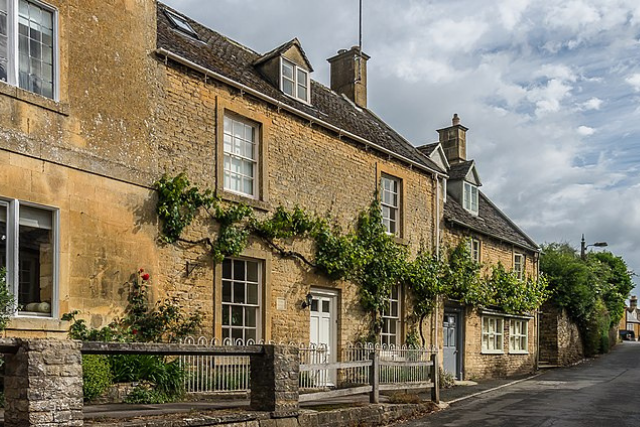
An unspoilt village in the heart of the Cotswolds, Blockley was a main centre of the silk industry in the 18th and 19th centuries. The village also featured regularly in the television series, Father Brown, where its vicarage was used as Father Brown’s residence.
Lined with golden stone cottages and old silk mills, Blockley is one of the prettiest villages in the Cotswolds. Admire the architecture of the parish church of St Peter and St Paul or take a stroll through Mill Dene Garden, a delightful English country garden.
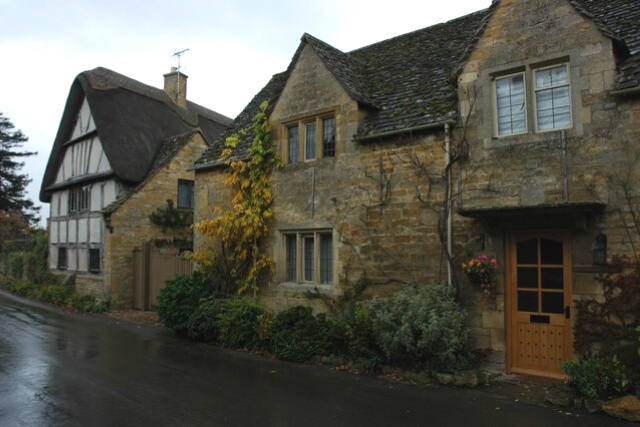
Scenic Stanton is everything you expect of a Cotswold’s village, boasting honey-hued limestone buildings surrounded by unspoilt countryside. The village is located along The Cotswold Way, creating the perfect base for a casual stroll or a more serious ramble.
Stanton is home to several historic churches and Stanton Court, a Grade II listed Jacobean Manor House built in the early 17th Century. After a day exploring the area, be sure to enjoy a hearty meal or refreshing drink at The Mount Inn Pub, offering panoramic views of the Malvern Hills.
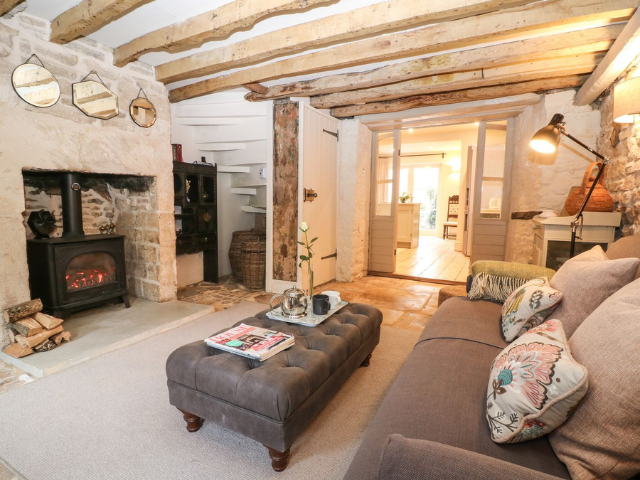
Check out these 77 things to do in the Cotswolds.
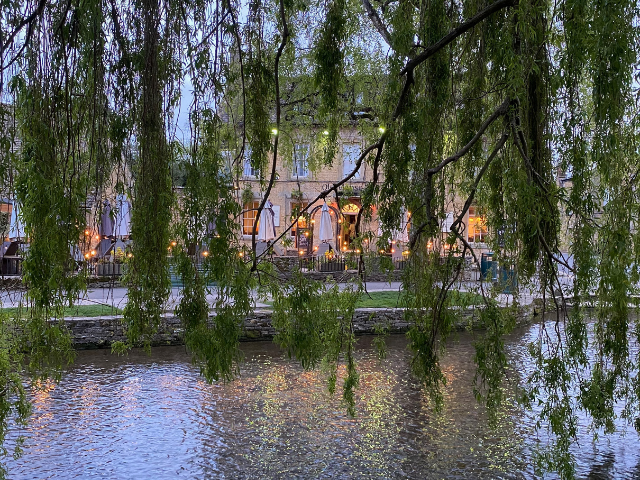
Wondering when to plan your trip to the Cotswolds? Each season offers something unique — from flower-filled spring lanes to cosy winter pub evenings. Here’s a guide to help you choose the perfect time to explore the prettiest villages in the Cotswolds, including Bibury, Bourton-on-the-Water, Castle Combe, Broadway, Burford, Stanton, Blockley, and the Slaughters.
Spring is one of the most beautiful times to visit the Cotswolds villages. The countryside comes alive with lambs, blossoming trees, and colourful cottage gardens. You’ll enjoy mild weather, perfect for walking, cycling, and photography before the summer rush.
Top spring highlights:
Average temperature: 10–18°C | Best for: Peaceful sightseeing and nature walks.
Summer brings the Cotswolds to life with village fêtes, open gardens, and outdoor dining. It’s the busiest time of year, but the energy and beauty make it worthwhile.
The rivers sparkle, pubs overflow into sunlit courtyards, and historic cottages look postcard-perfect.
Top summer highlights:
Average temperature: 18–25°C | Best for: Families, festivals, and outdoor fun.
Tip: Book cottages and attractions early — especially in July and August.
Autumn in the Cotswolds offers a quieter, more romantic feel. The rolling hills glow with golden tones, making it the best season for photographers and walkers. You’ll find cosy pubs with log fires and fewer crowds in popular spots like Castle Combe and Bibury.
Top autumn highlights:
Average temperature: 8–15°C | Best for: Romantic breaks, hiking, and scenic drives.
If you love quiet charm and festive lights, winter is a magical time to visit the Cotswolds.
Snow-dusted cottages and twinkling shop windows turn villages like Burford and Broadway into winter wonderlands.
It’s a peaceful season ideal for relaxing in a warm cottage or exploring crisp countryside paths.
Top winter highlights:
Average temperature: 3–8°C | Best for: Romantic getaways and cosy winter breaks.
Tip: Some attractions may close midweek, so check opening times in advance.
No matter when you visit, the Cotswolds’ timeless charm — honey-hued cottages, meandering rivers, and rolling green hills — never fails to enchant.
Q: Which of these villages are easiest to reach by public transport?
A: Some villages are more accessible than others by train or bus. For example, Moreton-in-Marsh (though not mentioned in this list) has its own station. From larger hubs like Oxford, Cheltenham or Bath you can often take a train or bus + a short taxi to reach villages like Bourton-on-the-Water, Burford or Castle Combe. Upper & Lower Slaughter and Stanton tend to require more planning (bus + taxi or car) as they are more rural.
Q: What is the best time of year to visit these villages?
A: Spring (April-June) and early autumn (September) are ideal: fewer crowds, mild weather, and great light for photography. Summer is beautiful but can be busy, especially in Bourton-on-the-Water and Bibury. Winter can be very pretty if you don’t mind fewer amenities being open and shorter daylight.
Q: Are these villages pet-friendly?
A: Many of the cottages and pubs in these villages are pet-friendly, but not all. It’s best to check individual accommodation details and any pub or restaurant in advance. Paths and countryside walks around villages like Upper and Lower Slaughter, Blockley and Stanton tend to be good for dog-walking.
Q: Which villages are best for quiet escapes?
A: If you’re looking for quieter, less touristy spots, Upper Slaughter and Lower Slaughter are good choices, as is Stanton. Blockley is also relatively peaceful. On the other hand, Bourton-on-the-Water and Castle Combe can get quite busy with visitors.
Q: What kinds of activities are there besides strolling and sightseeing?
A: There’s quite a bit to do:
Q: How long should I allow to properly explore one of these villages?
A: Typically, you can experience the highlights of one village in half a day (morning + lunch, or afternoon + dinner). If you want to wander more slowly, visit the smaller off-the-beaten-path spots, pop into local museums or take hikes from the village, plan for a full day. If staying overnight, you’ll get more immersion and less rush.
Q: Where is best to stay if I want to visit several of these villages?
A: Central Cotswolds locations (such as near Burford, Broadway or Moreton-in-Marsh) make good bases. Staying in a cottage that gives you good road access will help. Manor Cottages’ properties in many of these villages are well placed to allow you to “hop” between them without long drives.
Q: Are there any entry fees or ticketed attractions in these villages?
A: Most of the beauty is “open” — walking through villages, admiring cottages, seeing churches. But some specific sites (gardens, museums, attractions like the Broadway Tower) may have entrance fees. It’s best to check their websites ahead of your visit.
Image Credits: Photo by Vibrant Vision Studios on Unsplash Ian Capper, (CC BY-SA 2.0), Philip Halling (CC BY-SA 2.0).